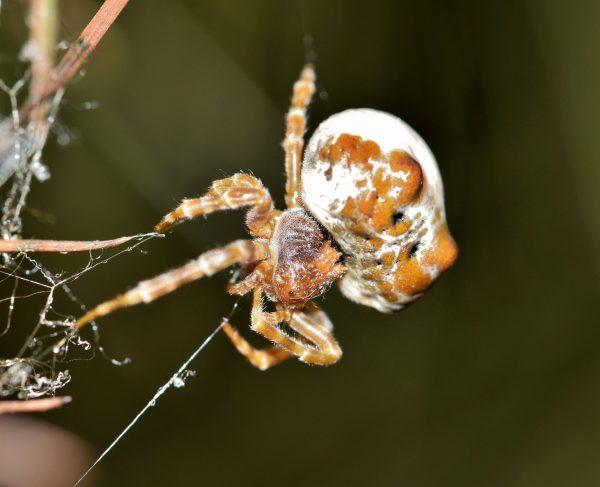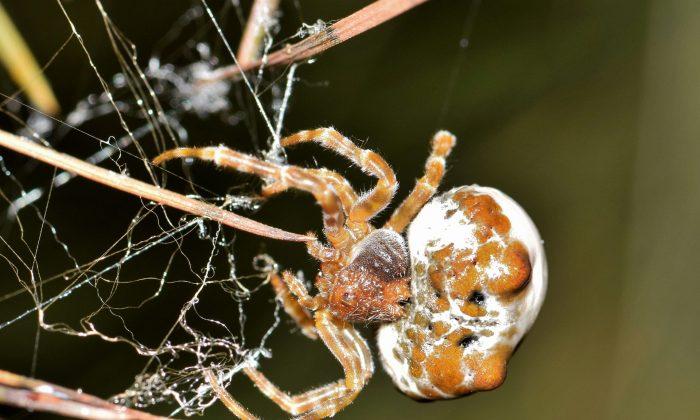William Williamson posted a picture to a community Facebook group, according to the Daily Mail, hoping for help identifying the creature.
The spider, with its green blotches and salmon-pink flecks on a white background, was quickly dubbed the “sushi-spider” by some commenters.
They are not dangerous—and they don’t spin webs to catch their prey.
The females can grow up to 2.5 cm (one inch) in length, but the males only reach a tiny fraction of that size: around 1.4 mm (0.05 inches)
The magnificent spider is one of three species of bolas spider. The name is taken from a South American throwing weapon made of rope and weights—the bolas—and refers to the way they lure prey with a sticky globule on the end of a line of silk.

“This sticky silk globule may contain pheromones that mimic the scent of a certain female noctuid moth species, attracting unwary male moths within range,” according to the museum.
The spider senses the vibrations of moth’s wings and twirls the thread as the moth approaches.
“The moth eventually flutters close enough to be hit by and become stuck to the globule. The spider then pulls up the strand, bites and immobilizes the moth, and either eats it straight away or stores it for later, wrapped in silk.”
Bolas spiders are so sensitive to vibrations that they can be coaxed into twirling their snare by plucking guitar strings.
But whereas bolas spiders hunt moths, the larger invertebrates can even take on mammals.
The grizzly encounter, documented for the first time, featured in a journal article that showcases attacks on small mammals by arthropods—mostly spiders—witnessed by zoologists in the Peruvian jungle.
A couple of times a year, biologists from the University of Michigan take a trip to Peru to study predator-prey interactions, often at night, when the ambush predators come to life.
One night, researcher Michael Grundler “heard some scrabbling in the leaf litter.”
Grundler’s sister Maggie pulled out her cellphone and shot photos and some video.
The tarantula was the size of a dinner plate, and the young mouse opossum was about the size of a softball, according to a university statement.






Friends Read Free